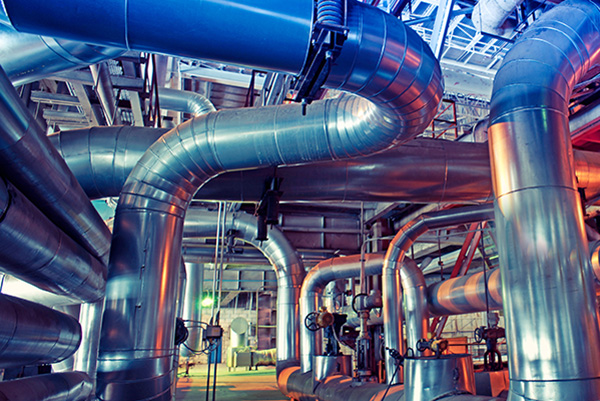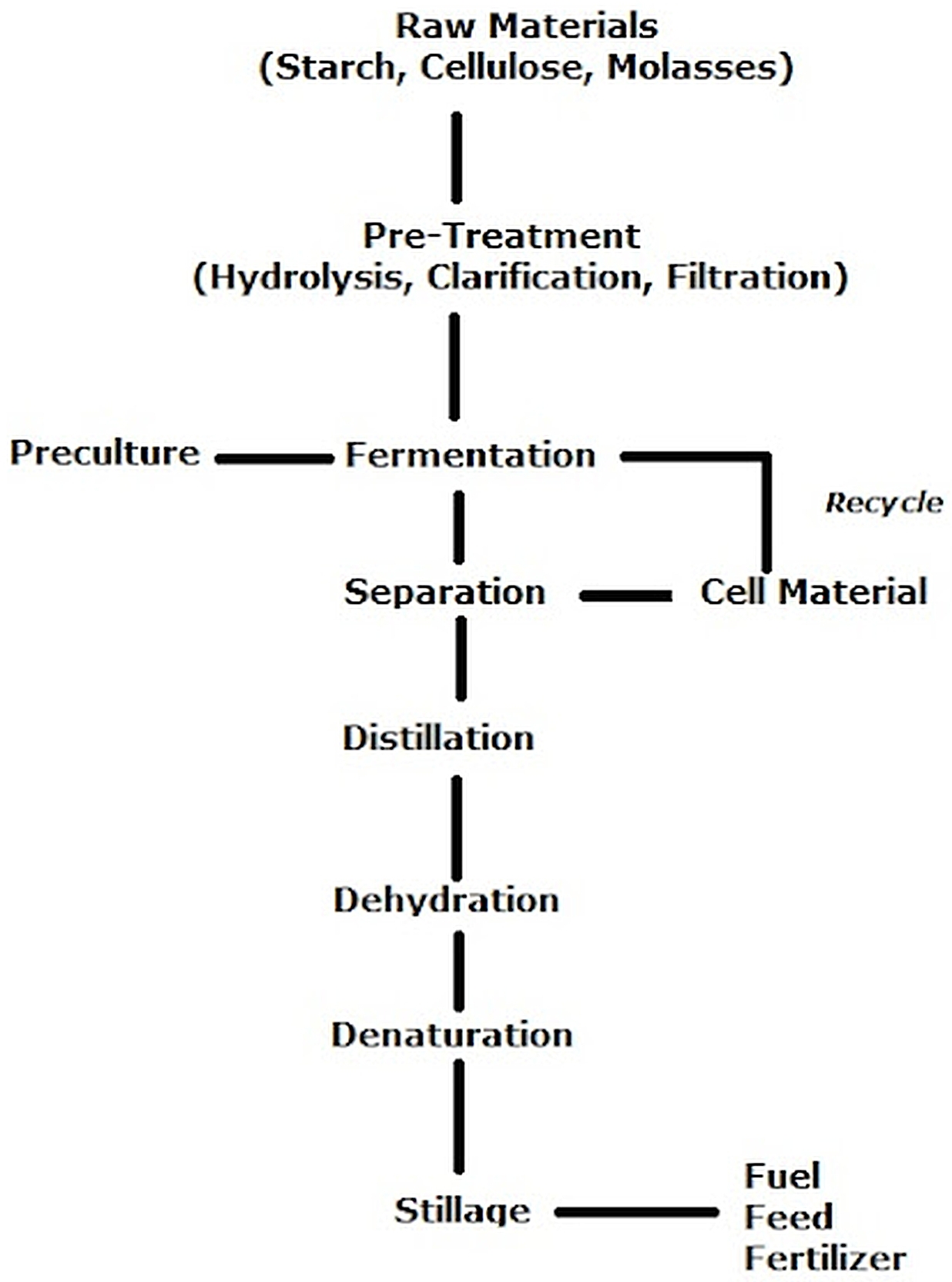Introduction
Bioethanol, chemically Ethanol (C2H5OH) has been produced by fermentation for thousands of years.[1] Ethanol Production plants are considered Biorefineries. That’s because they convert Biomass into Biofuel using Enzymes and Living Microorganisms.[2]
Raw Materials used for Alcohol Fermentation
There are large number of Raw Materials which can serve as Substrate for Alcohol Fermentation. The Input Material for making Ethanol is called Feedstock. Different Ethanol Production Facilities use different Feedstock.They are broadly categorized as[1]
- Sugary Raw Materials (Molasses, whey, glucose, sucrose, etc.)
- Starchy Raw Materials (Wheat, Rice, Maize, Potato.)
- Cellulosic Raw Materials (Wood, agricultural wastes, etc.)
Chemical Pathways
The main Molecules involved in Alcoholic Fermentation are the Startchy Biomass and Water Reactants, Ethanol and CO2 Products, and the intermediate Glucose Molecule.
Figure 1 - Main molecules involved in ethanol production[2]
(only reactants, intermediate and final products shown, stoechiometry not mentioned)

Microbes used
Certain Yeasts and Bacteria are employed for Alcohol Fermentation, the type of the Organism chosen mostly depends on the nature of Substrate used. In Yeast Sacchromyces Cervisea is widely used. In Bacteria Zymomonas Mobilis is most frequently used for Alcoholic Fermentation.[1]
Glucose gets broken down to Pyruvate by Glycolysis under Anaerobic Conditions (in the Absence of Oxygen), Pyruvate is converted to Acetaldehyde by the Enzyme Pyruvate Decarboxylase. Acetaldehyde is then reduced by Alcohol Dehydrogenase to form Ethanol.[1]
Ethanol at high Concentration in the Medium inhibits its own Biosynthesis, this is particularly observed when Yeasts are Fermentation Organisms. it is generally seen that the Growth of Yeast ceases at 5% Ethanol Concentration. Zymomonas Mobilis can tolerate even higher Alcohol Concentration.[1]
Figure 2 - Conversion of Starch to Ethanol[1]
| Starch |
|
| ↓ |
Hydrolysis |
| Glucose |
|
| ↓ |
Glycolysis |
| Pyruvate |
|
| ↓ |
Pyruvate Decarboxylase |
| Acetaldehyde |
|
| ↓ |
Alcohol Dehydrogenase |
| Ethanol |
|
Biosynthesis of Ethanol
Ethanol Production plants are considered Biorefineries. That’s because they convert Biomass into Biofuel using Enzymes and Living Microorganisms.[2]
The actual Process depends on the Chemical Composition of the Raw Materials.
- Pretreatment: most of the Raw Materials of Alcohol Fermentation requires some degree of Pretreatment. Sugary Raw Materials require mild ot no Pretreatment while Cellulosic Raw Material need extensive Pretreatment. This is because Cellulosic Substance have to be subjected to Acidic or Enzyme Hydrolysis to release Monosaccharide Units that are needed for Alcohol Production.[1]
- Milling: Whole Kernels of Grains and Seeds such as Corn and Wheat are ground into a form of Flour, or Meal. The Meal is mainly Starch. A Starch is a Carbohydrate made up of Long Chains of Sugar Molecules.[2].
- Liquefaction: Water is added to the Meal to make ‘Slurry.’ The Slurry is heated to break the long Starch Molecules into smaller Pieces. The Enzyme Alpha-Amylase is added to catalyze (or speed up) the Breakdown of the Starch Molecules.
- Saccharification: Starch Molecule Pieces are broken down into the simple Sugar Glucose. This Reaction is catalyzed by an Enzyme called Glucoamylase.
- Fermentation: Single-celled Microorganisms called Yeast are added to the Slurry. Fermentation is the Biochemical Process that occurs when Yeast breaks down Glucose. Yeast gets energy from Glucose. As a result, Ethanol is produced.
- Distillation and Dehydration: The Product of the Fermentation Process is only 10-15% Ethanol. It must be concentrated to become pure (100%) Ethanol. Ethanol has a lower boiling point than Water. It is selectively evaporated and condensed in a Process called Distillation. This Process produces Ethanol that is 95% pure. The remaining 5% of the Mixture is Water. The mixture is strained and dehydrated to produce pure Ethanol.
- Denaturation: A small Amount of Gasoline is added to Fuel Ethanol to make it undrinkable.
Figure 3 - Production Process of Ethanol[1]

Alcoholic Fermentation Technologies
The different Alcoholic Fermentation Processes are:
- Grain (or Corn) Dry Milling
- Grain (or Corn) Wet Milling
- Sucrose-Based (sugarcane / sugarcrops) Process
- Cellulosic Biomass Processing
References
- Apr 8, 2013. Production of Ethanol by Fermentation. technologyinscience.blogspot.com
- Krysta Levac. Aug 13, 2018. How is Ethanol Made?. letstalkscience.ca
- Bušic, Arijana & Mardetko, Nenad & Kundas, S. & Morzak, Galina & Belskaya, Halina & Ivancic Santek, Mirela & Komes, Drazenka & Novak, Srdan & Šantek, Božidar. (2018). Bioethanol Production from Renewable Raw Materials and Its Separation and Purification: A Review. Food Technology and Biotechnology. 56. DOI: 10.17113/ftb.56.03.18.5546












